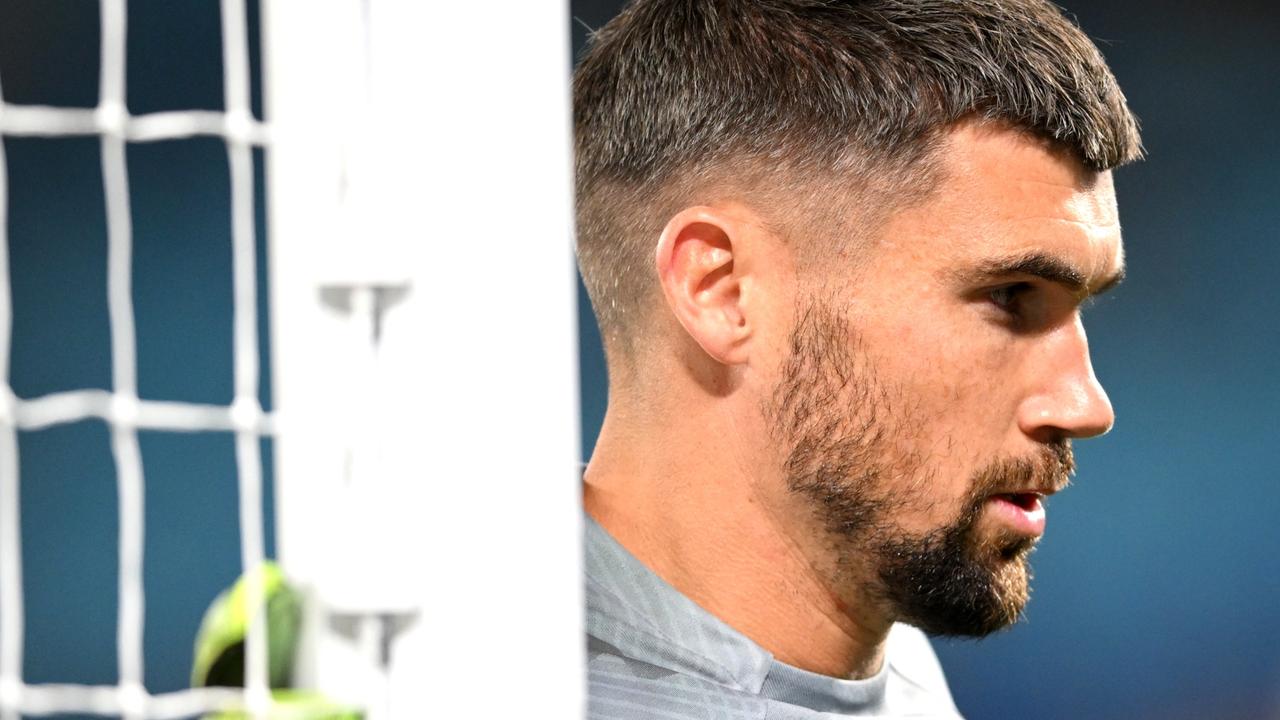Soccer 2022: Meet Australia’s first female footballers caught up in a battle for recognition
They thought they were on the cusp of becoming the oldest capped Matildas — instead the Australian XI which played in the first Asian Cup has been denied formal recognition. Find out why.
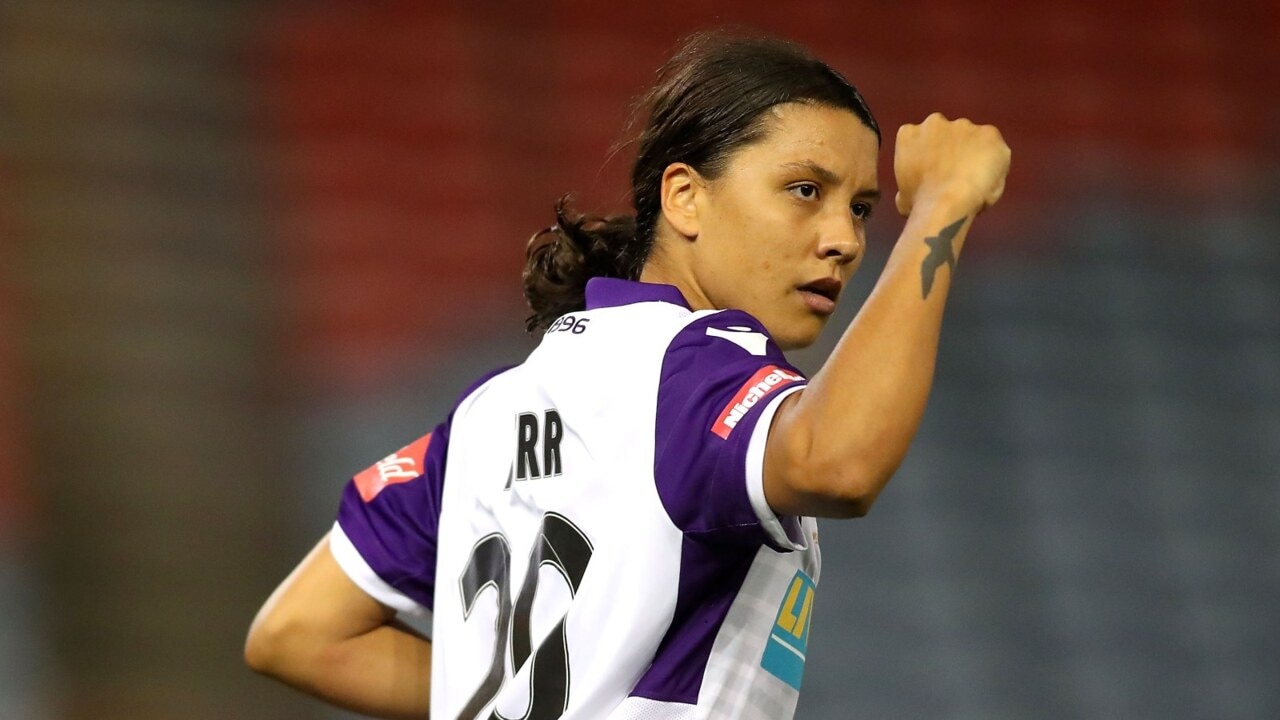
Football
Don't miss out on the headlines from Football. Followed categories will be added to My News.
At 80 years of age, Pat O’Connor thought she was on the cusp of becoming the oldest capped Matilda in women’s football.
But O’Connor’s Australian XI, which played in the first AFC Women’s Championships, now called the Asian Cup, has been denied formal recognition as the First Matildas.
It comes as Football Australia hustles to appease the disgruntled group ahead of the 2023 women’s World Cup in Australia.
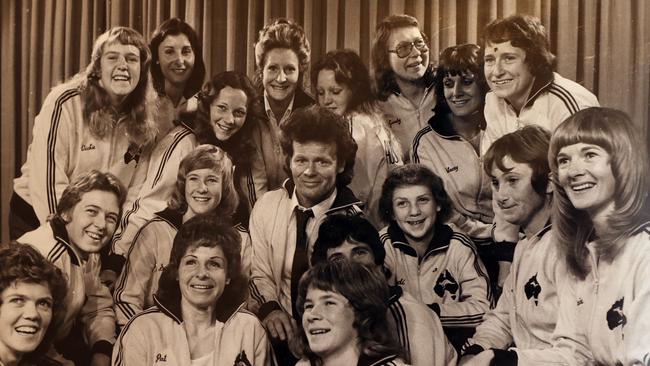
While FA said they “welcomed” the 1975 team into the “football” family they stopped short of acknowledging the players as the first Matildas.
They have also denied them official playing numbers.
It’s a decision which matriarch of the 1975 team Trixie Tagg feeling frustrated and “bloody furious”.
Other members say they feel hurt that their contribution to the history of Australian football has been overlooked.
In a meeting this month, FA met with members of the 1975 team to silence a debate which has raged for almost 50 years.
The FA’s “welcome to family” statement was slammed by the 1975 Matildas, who argue they have been “green and gold” washed from the history of Australian football.
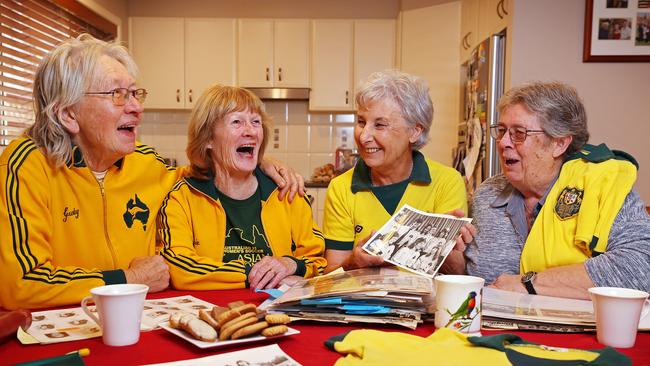
While Football Australia acknowledges the historical significance of this side and the first Asian Cup tournament, they argue there was not a competitive process to select the team.
A spokesman from Football Australia said: “ … while a historically significant team, the team did not meet the criteria to be categorised as an Australian Senior Women’s National Team.” “This recommendation (from FA’s Panel of Historians) was considered and accepted by Football Australia. In doing so, Football Australia does recognise the 1975 team as the first women’s team to represent Australia in an internationally sanctioned tournament.”
Most players were sourced from the one club — St George Budapest in Sydney — a side which had won the 1974 national championships.
The Australian team has also been sanctioned and approved by the Australian Soccer Federation — the governing body recognised by FIFA.
The Australian Women’s Soccer Association was responsible for state and national championships but at that time, no national women’s team was selected.
And consideration for the 1975 tour, paid for by the players themselves, was open to all female players.
Those that expressed interest, went and the Australian XI finished third against teams from New Zealand, Thailand, Malaysia, Singapore and Hong Kong.
Players from other countries have subsequently been internationally capped for the tournament.
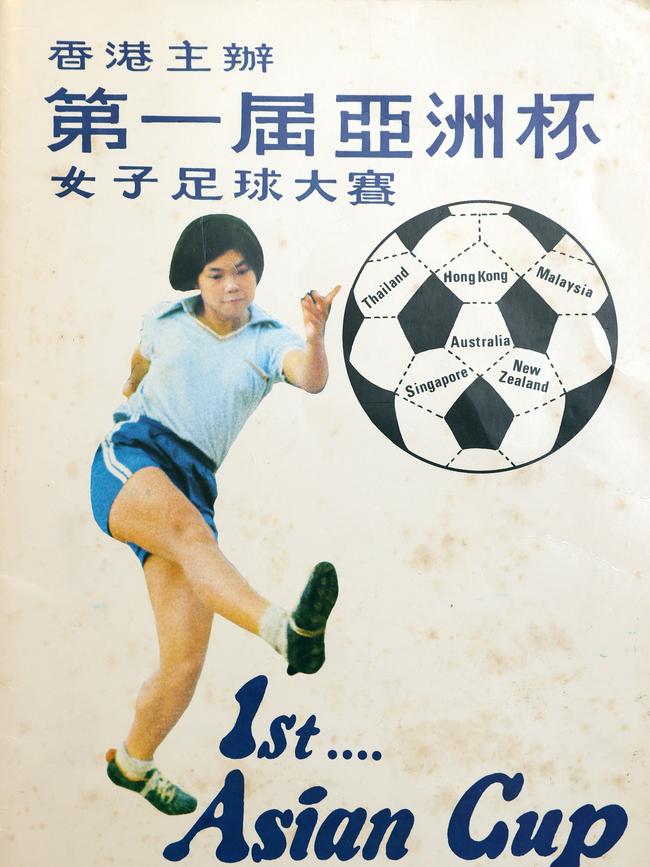
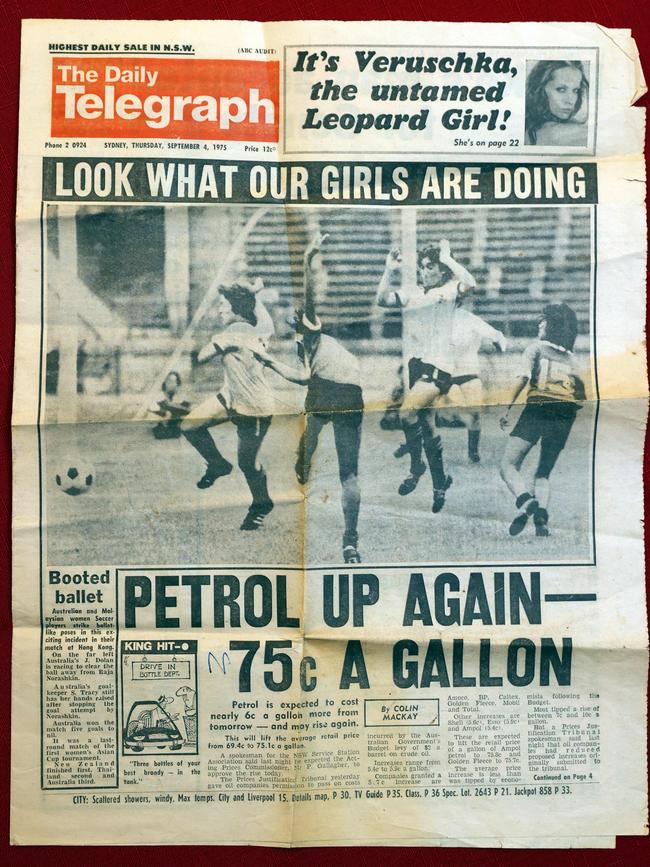
Tagg, would go on to be the Matildas first female coach in 1981, said: “We represented Australia with pride.”
“We played our guts out every minute of every game … we played some great soccer … and I am bloody furious that this team is not recognised.”
The current women’s Asian Cup trophy was cast from six solid silver bars, as a tribute to the six competing countries that played in the first tournament in 1975.
Despite being acknowledged in 5.5kg of sterling silver bullion, Football Australia argue that the 1975 games don’t constitute a full “A” international status as the team.
Governing body FIFA, recognises certain international games as ones where a player can be awarded a cap — these games are regarded as International “A” games.
These are matches in which both nations field their first representative team.
Under this definition, players at the 1975 Asian Cup were awarded caps by their governing bodies — all except the Australian players.
Additionally, the 1975 players were a representative team authorised by Australian Soccer Federation, who at that time was the only governing body recognised internationally.
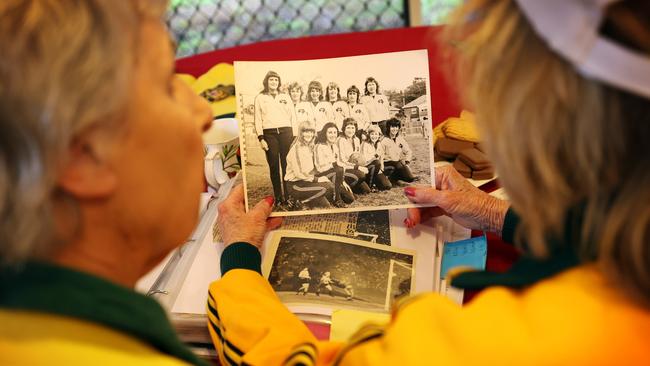
Historian and football journalist Ted Simmons, who in 2006 was awarded an OAM for his services to football and is also a Life Member of Australian Football Media Association, explained: “At that time in women’s football there was no national team selected.”
“This was an outstanding women’s football team that hadn’t been beaten for about three years — easily the best football team in Australia.
“And they had permission from the Australian Soccer Federation, from Sir Arthur George, to wear the green and gold and the Coat of Arms.
“They were the first team of Australian women to play overseas in an international tournament — and they deserve recognition for that.”
Simmons, 94, covered the Socceroos FIFA World Cup campaigns for Mexico 86, Italia 90 and USA 94, as well as several FIFA World Cup finals for junior men’s national teams.
He was a regular reporter on the weekly news of Australian football, including the National Soccer League from its inception in 1977 — and understands the reluctance of FA to acknowledge the team.
“It’s a difficult position for FA to be in — they would not want to recall almost 200 caps and it would also create anger for some women from 1979 who are recognised at the first Matildas.
“There is a compromise in recognising the ladies with caps — and using Roman numerals so as not to not disrupt the current playing numbers.
“The 1975 team deserve recognition.”
Tagg, a young striker at the time, said: “Kay de Bry and her husband Nick went to an important meeting in Hong Kong well before the tournament.
“Initially it was going to be a competition for clubs from different countries.
“The organising committee with representatives from the different countries then changed it to a tournament for nations and it became the Asian Cup.
“Our St George ladies team had been fundraising for 18 months for this tour — including a walk from the centre of Sydney to Cronulla.
“We weren’t tacky like the New Zealand girls who were fundraising by offering 20 cents a kiss.
“ Our team got the approval from the men’s ASF, who allowed us to wear the Australian XI badge.
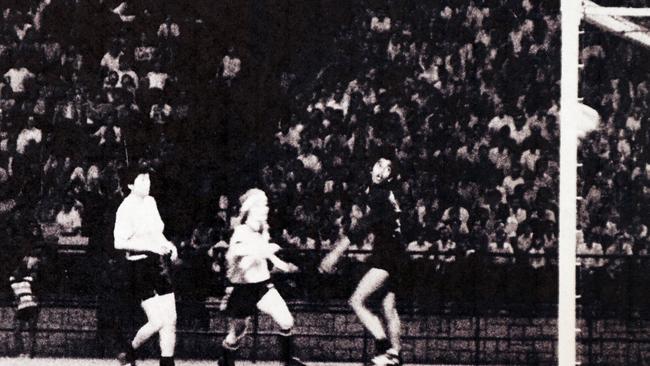
“They were aware that nine of our girls represented NSW in 1974 and became the national champions.
“I would never expect that cap numbers would have to change.”
Kim Coates is officially listed as Matilda cap No. 5 from her playing days in the 1979 team — but she also played left back for the 1975 team.
Only three players from the 1975 went on to be capped in 1975 — Coates and No. 1 Julie Dolan and No. 6 Cindy Heydon.
Speaking publicly for the first time about her bewilderment at the 1975 team being ignored, Coates said: “I was at the 40th anniversary for the 1979 team — that’s when they started handing out the caps and it was only then I realised the 1975 team hadn’t been recognised.”
“I thought to myself — what the hell is going on? I played for both teams — the 75ers and the 79ers and I can tell you, we trained just as hard in both teams.
“And … to be honest the Asia Cup was a harder task than a one-off game against New Zealand.
“Not taking anything away from anyone who has played for Australia but the 75s were the first.”
Gundy Zarins insisted her teammates don’t want to overshadow the 1979 team, but admitted it would be special to receive official recognition for their achievements in Hong Kong.
“There is no doubt that we all felt the pressure of representing Australia … and trained accordingly,” Zarins said.
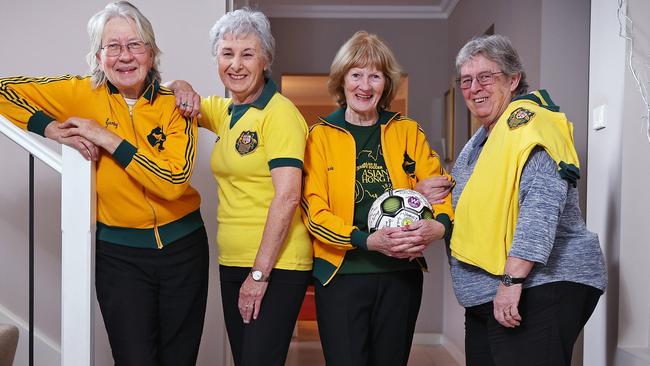
“We didn’t want to let anyone down … including Rale Rasic (first coach to take Australia to the World Cup finals in 1974) who had taken us for training sessions.”
Sitting around with cups of tea and scrapbooks, the 75ers are delighted that the spotlight is on women’s football ahead of next year’s World Cup.
Lynn Everett Miller said she would never forget the atmosphere in the stadium in Hong Kong and to see so many people interested in their sport.
But she said the team also wanted to honour the memory of their coach, the late Joe O’Connor, husband of captain Pat.
Lynn said: “Just to be officially acknowledged would mean the world to us. Especially for Pat and Joe (O’Connor), they did so much for us and the women’s game.”
The 75ers are hoping their story will become part of Australia’s 2023 World Cup journey and result in official recognition — worthy of the sterling silver bar that marks the Asian Cup trophy.
Out of the 13 members present in person and on call at this month’s meeting with Football Australia — (Connie Selby left the meeting early) all but one — Julie Dolan — were in favour of pursuing their claims to be recognised.
Tagg added: “ We just want a true history of what happened.”
This team is standing firm in their belief that cap fits and they should be wearing it, Roman numerals and all.
More Coverage
Originally published as Soccer 2022: Meet Australia’s first female footballers caught up in a battle for recognition




